Home » Pheasant Hunting » Using Pheasant Feathers For Fly Tying
Using Pheasant Feathers For Fly Tying
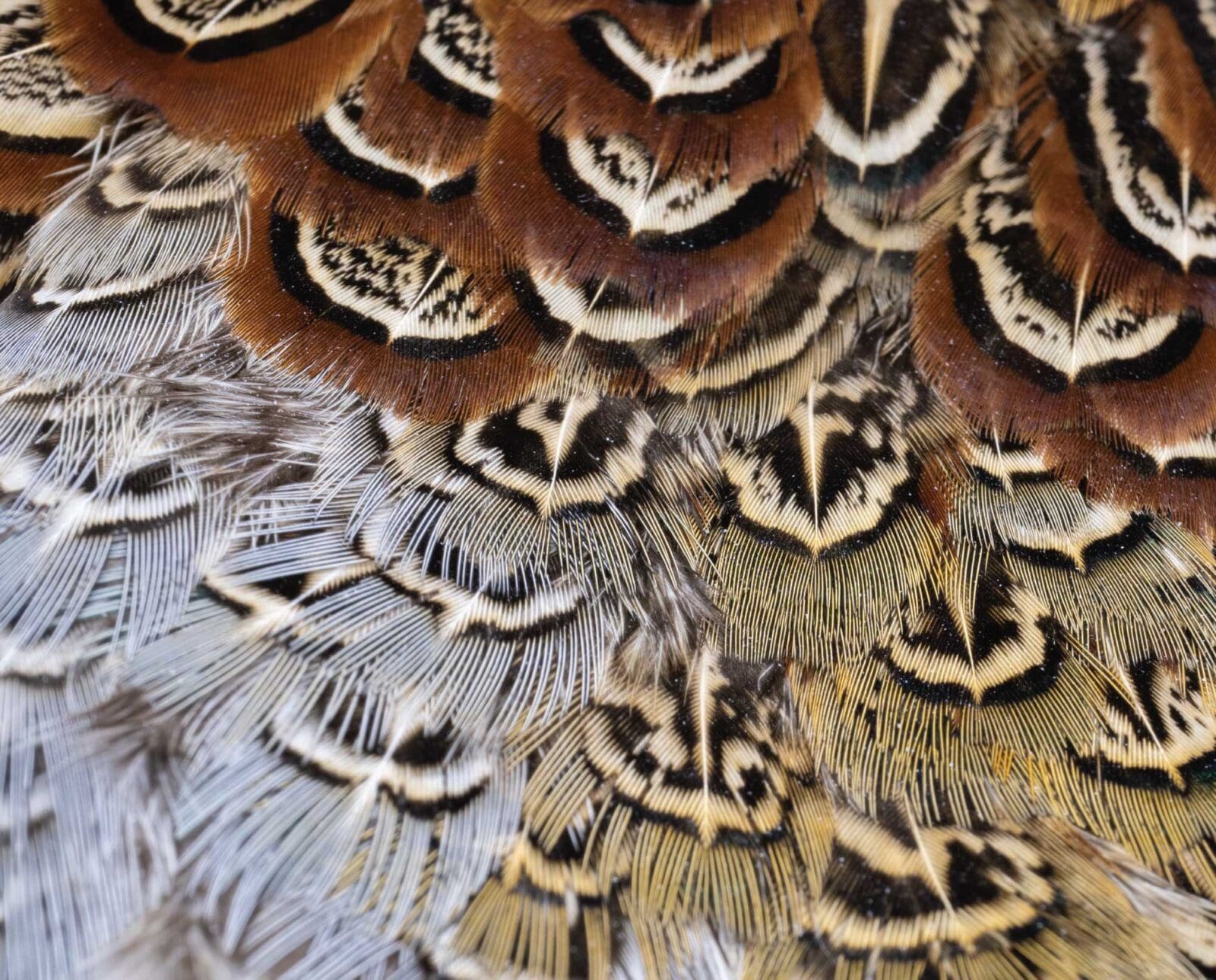
Marc Fryt is a former Army helicopter pilot, avid fly…
Pheasant feathers are one of the most useful and versatile supplies in fly tying
Whether you are new to the vice or have been tying for years, it is easy to see the versatility and importance of ringneck pheasant feathers when it comes to fly tying. The influence pheasants have on fly tying culture is deep and rich. As the famous fly tyer Jack Gartside wrote, “There’s probably not a bird that flies that has more uses for the fly tyer than the ringneck pheasant.” Take a pheasant from the field, and you can create historic and iconic patterns, new and innovative designs, or experiment by incorporating pheasant feathers into your favorite flies.
When looking over a pheasant skin with all the colors, shapes, and sizes, it can be somewhat disorienting to decide which feather to use. I prefer placing the feathers into a handful of categories with specific applications. The categories listed below are a great starting point and will help you to utilize an entire pheasant skin. However, don’t be afraid to experiment with your feathers. You will be surprised by what you can come up with at the tying bench.
Green Neck Feathers
The green-hued neck feathers have a beautiful iridescent color and offer smaller feathers for dry flies and nymphs. One application is to use the neck feathers for wings on terrestrial patterns like grasshoppers, crickets, and beetles such as the Letort Cricket. It is best to apply Flexament, Sally Hansen’s Hard as Nails, or thin UV resin to the feather to hold the wings’ shape and protect against a fish’s teeth.
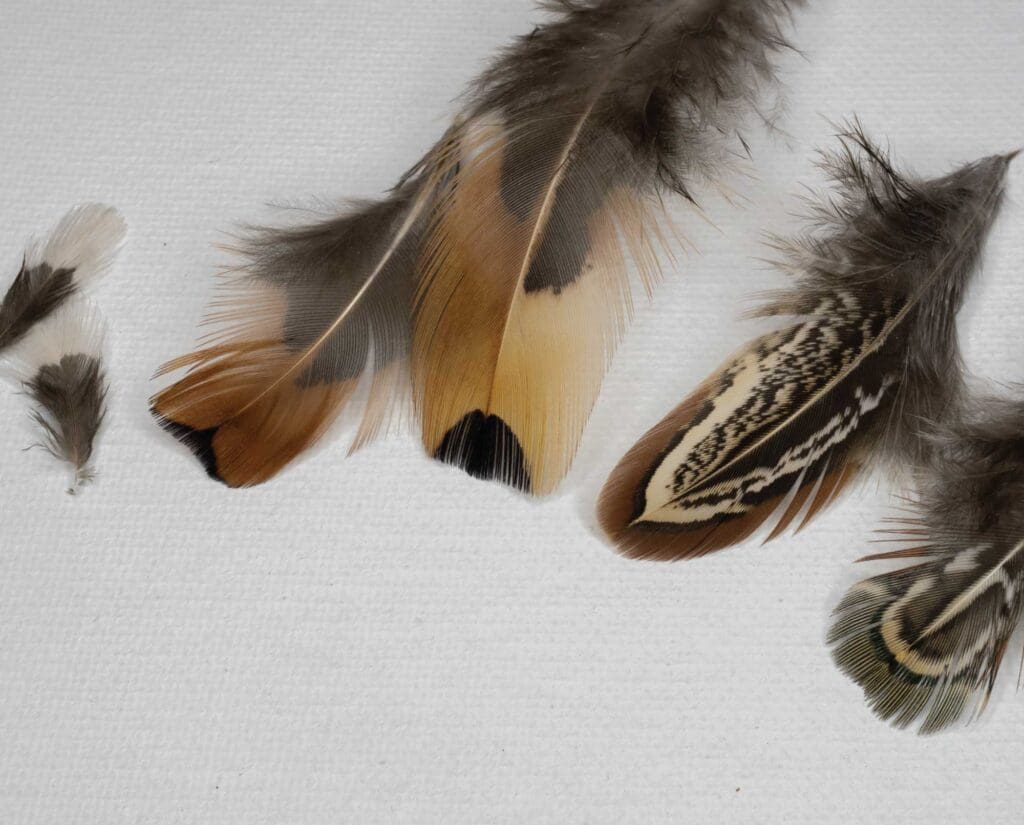
White Neck Feathers
The narrow band of white neck feathers is fun to experiment with and apply to different patterns. Typical uses for them are fan wings for mayfly patterns, either tied upright or in a spent (spinner) position. Another application is tying them onto streamer patterns for eyes or cheeks that add some contrast and pop. You can also dye the feathers (pink, orange, purple, etc.) to add a hotspot wingcase to nymphs.
Almond Hearts
Located further down the neck and along the flanks and breast of the bird are almond heart feathers. They are an amber or dark bronze color with a black tip. Rather than coming to a point at the end of the feather, they curve back towards the stem, creating a unique heart shape.
Like the green neck feathers, tyers can use the smaller almond hearts to make wings for terrestrial and caddis patterns like the Gartside Caddis, and they can also be tied in to create carapace bodies for crayfish. For the larger almond hearts, you can wrap them around the hook shank to form bodies on streamer patterns.
Church Windows
The church window feathers are on the upper and middle of the back. These feathers have a brown border with a black and white mottled center. Church windows are popularly used as wings on Matuka-style patterns and as cheeks for streamers. However, lower down on the back, the feathers soften up and change into a blue/greenish-hue. These greenish church windows are a larger size and fantastic soft hackle for larger wet fly collars and bodies for streamers. Tyers can also pull individual fibers from the stem to form tails and legs for nymphs.
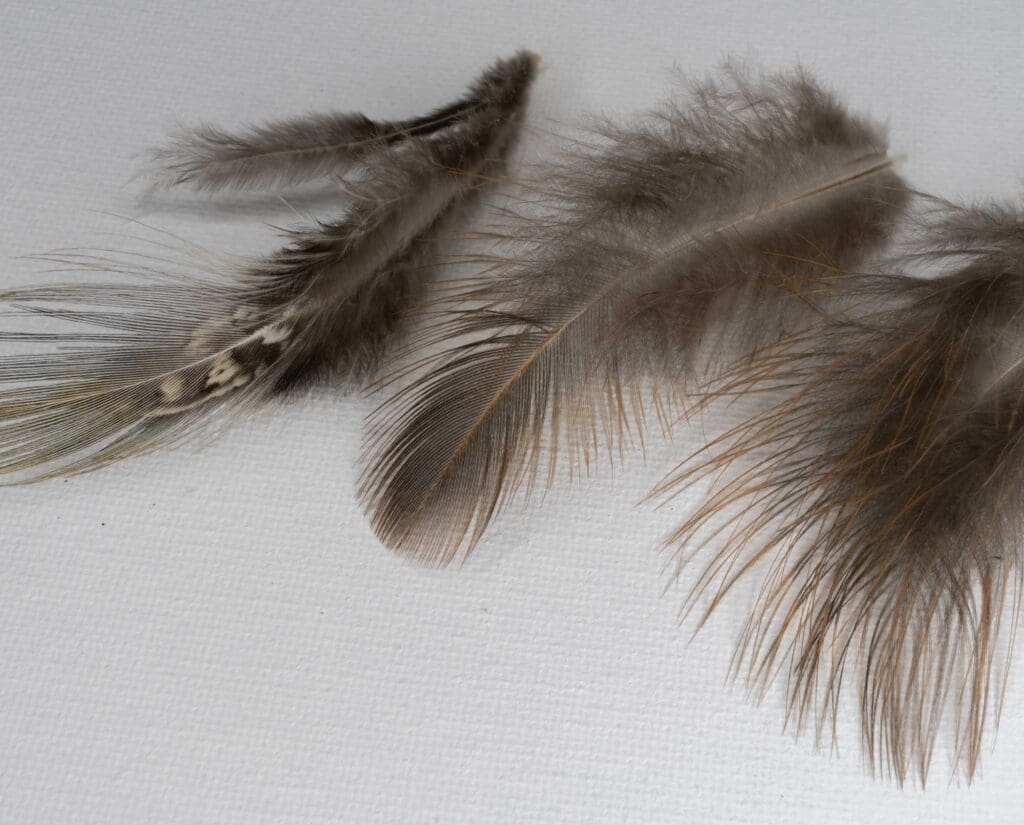
Rump Feathers
Further down on the back and into the rump of the bird, the church windows fade into even larger feathers with longer, stiffer barbs. These rump feathers are a mixture of brown, blue, and green with lanky and wiry barbs better suited for tailing on dry flies. I also enjoy incorporating them into streamers to help define the fly’s shape and to flare out other softer feathers like marabou (or pheasabou).
The barbs can also be wrapped individually around the hook shank to form quill bodies for nymphs, wet flies, and dry flies. Whenever doing this, though, it is best to reinforce the fly body with UV resin or head cement.
After-Shaft Feathers
Behind most body feathers, a second, smaller feather is attached to the base of the stem. This smaller feather is called an after-shaft feather, and they are down-like. Although after-shaft feathers are brittle, they are still handy at the vice. They can be used in dubbing loops and can be wrapped around the hook shank to create unique, buggy bodies in patterns like the Filo Bugger.
Pheasabou
Along the flanks of the pheasant and around the vent are larger, marabou-like feathers that many tyers call pheasabou. Pheasabou is a smaller version of marabou (which comes from turkeys). It has a variety of uses, such as tailing for smaller Wooly Buggers, body material for nymphs, emergers, and damselflies, and collars on smaller streamers.
There are also pheasabou feathers that have stiffer feather tips and do a better job trapping air bubbles. These stiffer pheasabou feathers are better applied as emerger wings in patterns like the CPF No Hackle and Matt’s PMD Emerger.
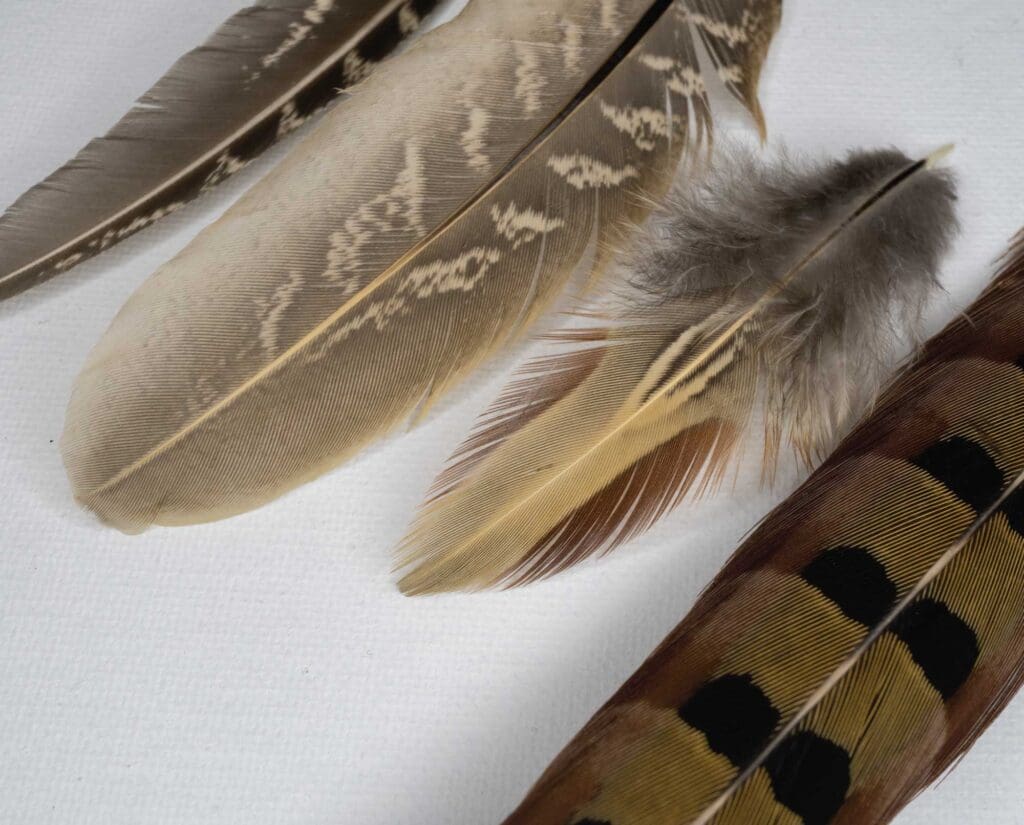
Pheasant Wings
While I don’t tie with the wing feathers very often, the leading edge of the primary flight feathers can be stripped, and the quills are used for smaller stonefly tails and antennae. The secondary flight feathers are webby, and matched pairs (i.e., one from either wing) are great for smaller-winged wet fly patterns. The next row of feathers above the primary and secondary flight feathers are the coverts, and they have some applications for tails, wings, or cheeks on streamers.
Pheasant Tail Feathers
Pheasant tail feathers are the most ubiquitous natural fly tying material found next to any vice. Everything from nymph bodies and thoraxes to grasshopper legs and tailing material can be created from pheasant tail feathers. However, when harvesting tail feathers from a pheasant, you want to keep the long main two tail feathers since they have stiffer barbs on either side of the stem. The other, smaller tail feathers will only have stiffer barbs on one side of the stem.
Example Fly Patterns
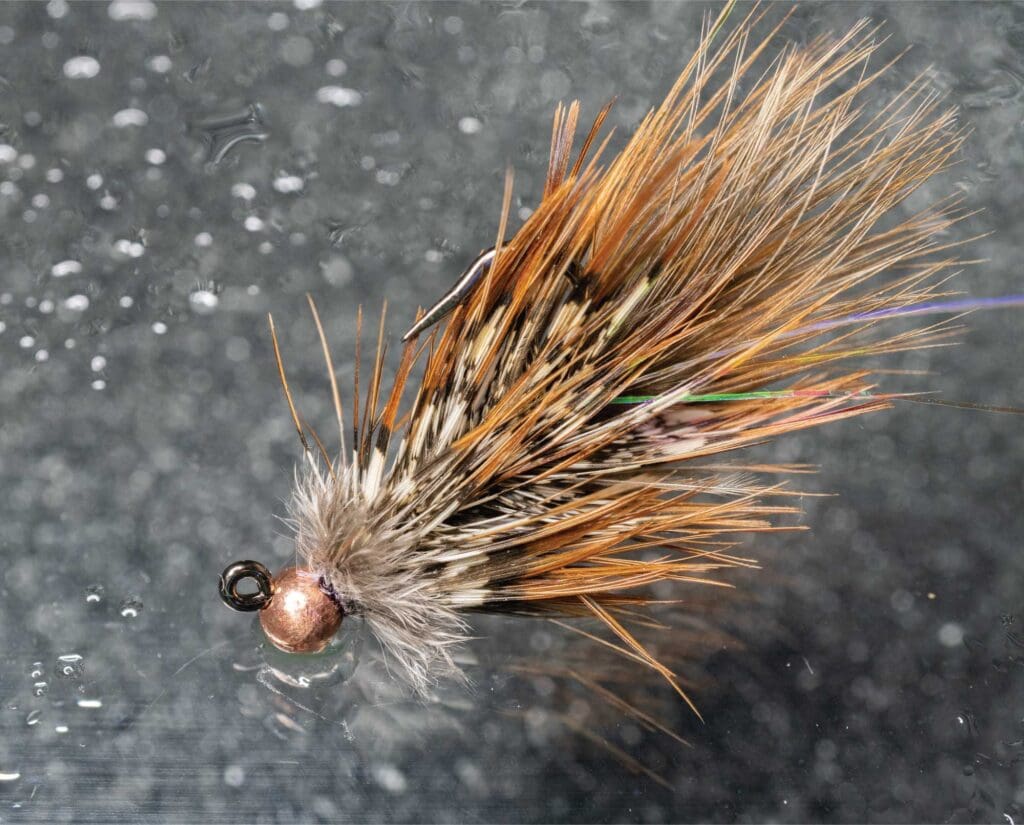
Jigged Feather Bugger
This pattern is one to experiment with by varying the pheasant feathers for the body by mixing church window, rump, and pheasabou feathers.
- Hook: Jig style hook, sizes 4-10
- Weight: Slotted tungsten bead
- Thread: Gel spun 50D
- Tail: Pheasabou and flashabou
- Body: Pheasant church window feathers
- Collar: Pheasant after-shaft feather wrapping using a dubbing loop
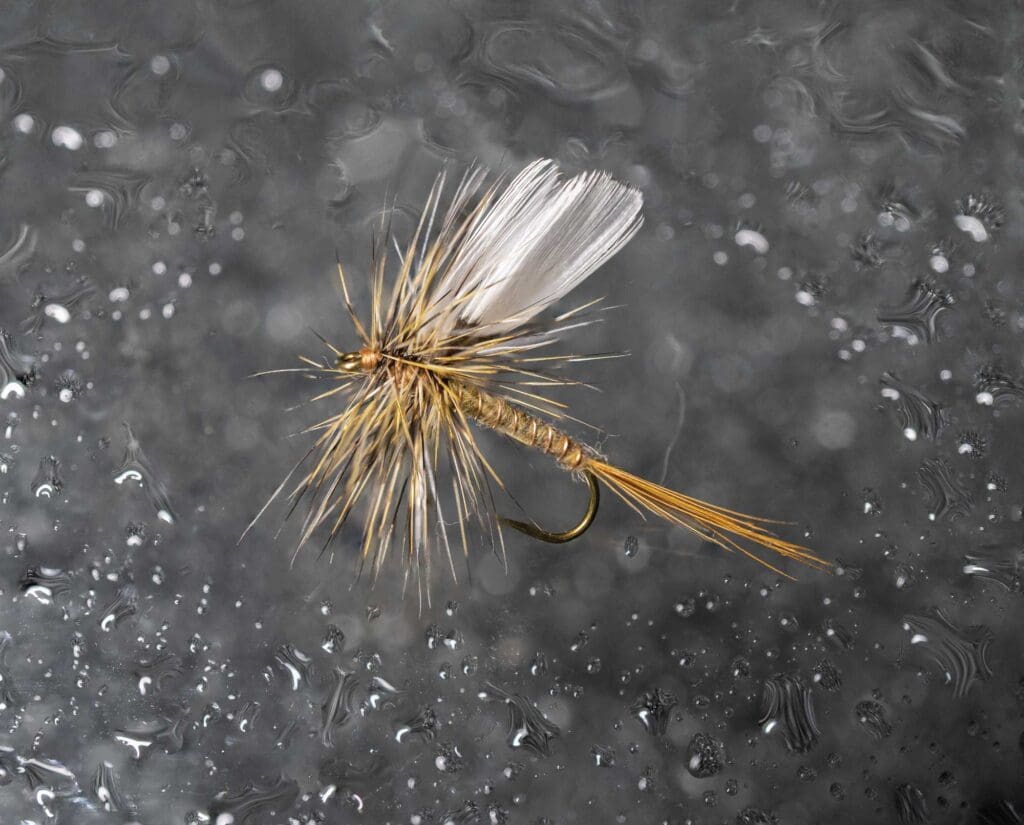
Fan Wing Mayfly
With this pattern, change up the hook size to match the mayfly you would like to mimic, along with the color of the body and hackle. You can also dye the pheasant’s white neck feather a bright color (orange or pink, for example) to help it to stand out on the water.
- Hook: Standard dry fly hook, sizes 10-16
- Thread: 6/0, color to match fly pattern
- Tail: Barbs from a pheasant rump feather
- Ribbing: Small copper, silver, or gold wire
- Body: Dry fly dubbing, color to match fly pattern
- Hackle: Rooster saddle or cape dry fly hackle, color to match fly pattern
- Wings: Pheasant white neck feathers
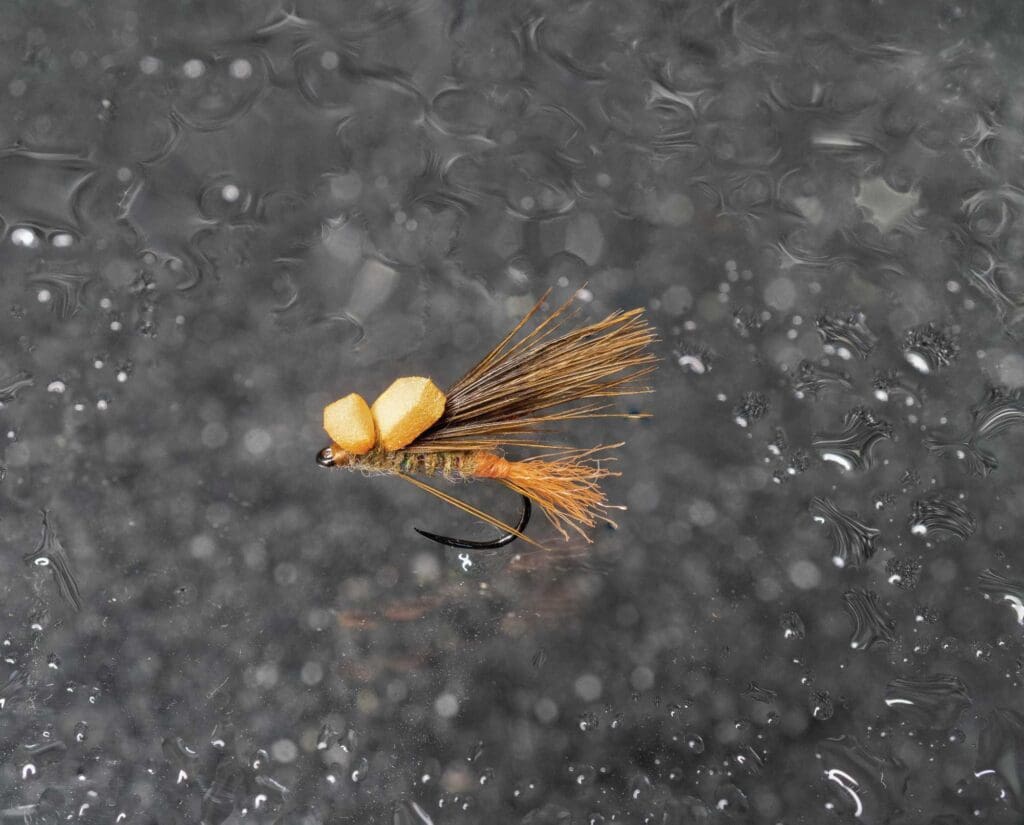
Matt’s Emerger
This pattern combines Matt’s PMD Emerger and Jack Gartside’s CPF No-Hackle Emerger. Pay attention to the feather you use for the wing; you will want to use the particular pheasabou feather with stiffer terminal barbs. Feel free to vary the color of the tailing, body, and foam material.
- Hook: 2x long, 2x wide gap nymph hook, sizes 12-16
- Thread: 6/0, color to match fly pattern
- Tail: Glo Bright Floss, color to match fly pattern
- Ribbing: Small mirage tinsel
- Body: Dry fly dubbing, color to match fly pattern
- Underwing: Krystal flash
- Wing: Pheasabou (with stiffer terminal barbs)
- Foam: 2mm, color to match fly pattern
- Legs: Barbs from a pheasant rump feather
- Head: Dry fly dubbing, color to match fly pattern
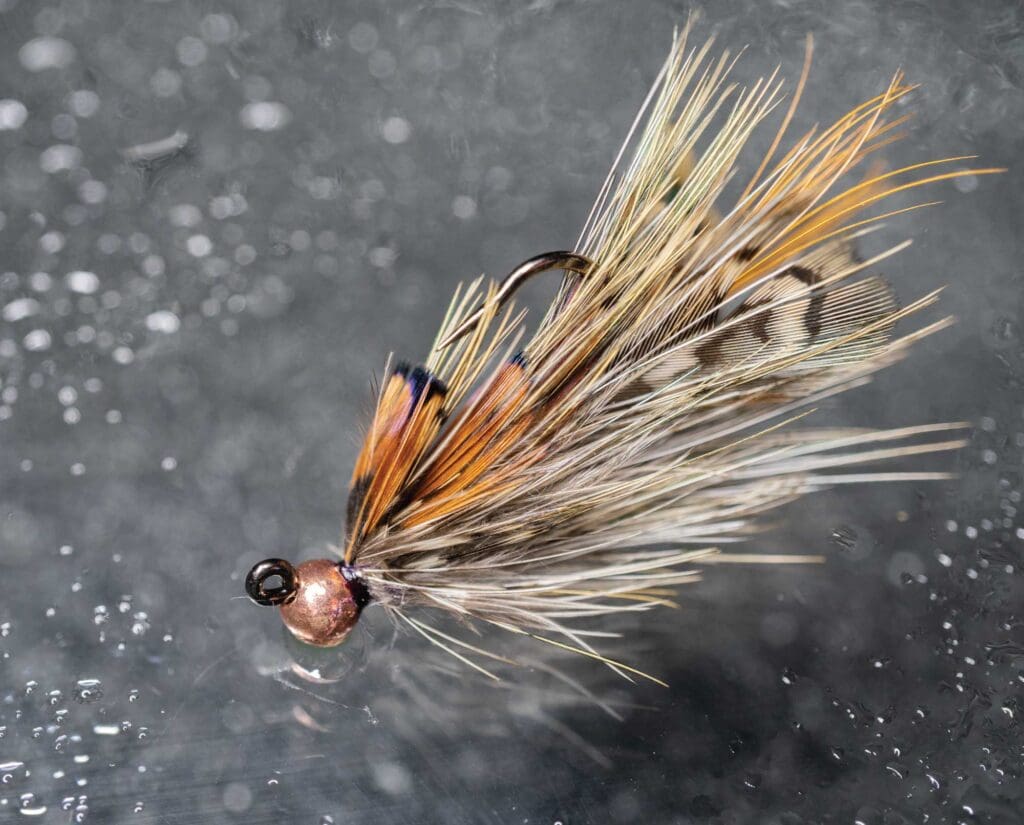
Mini Feather Craw
This pattern was developed by Gunnar Brammer and uses nothing but pheasant feathers in the design. It is an excellent imitation of smaller crayfish or baitfish and is effective for both bass and trout.
- Hook: Jig hook, sizes 4-8
- Thread: Gel spun 50D
- Weight: Slotted tungsten bead
- Antennae: Pheasant tail fibers
- Claws: Pheasant rump feathers
- Legs/Body: Pheasant rump feathers
- Carapace/Body: Pheasant almond hearts
Marc Fryt is a former Army helicopter pilot, avid fly fisherman, and freelance writer and photographer. Marc also currently resides in Spokane, Wash., and is a guide at Fly Fish Spokane.



